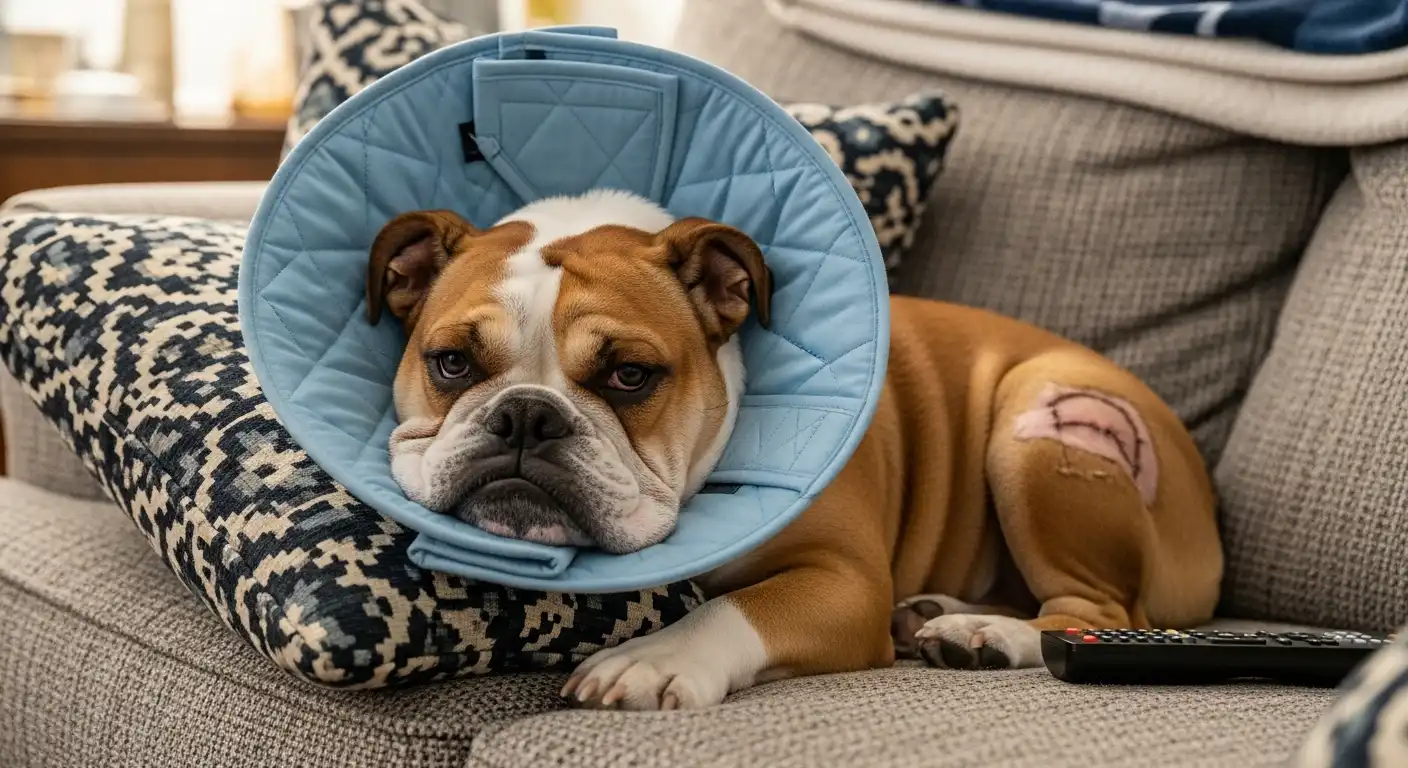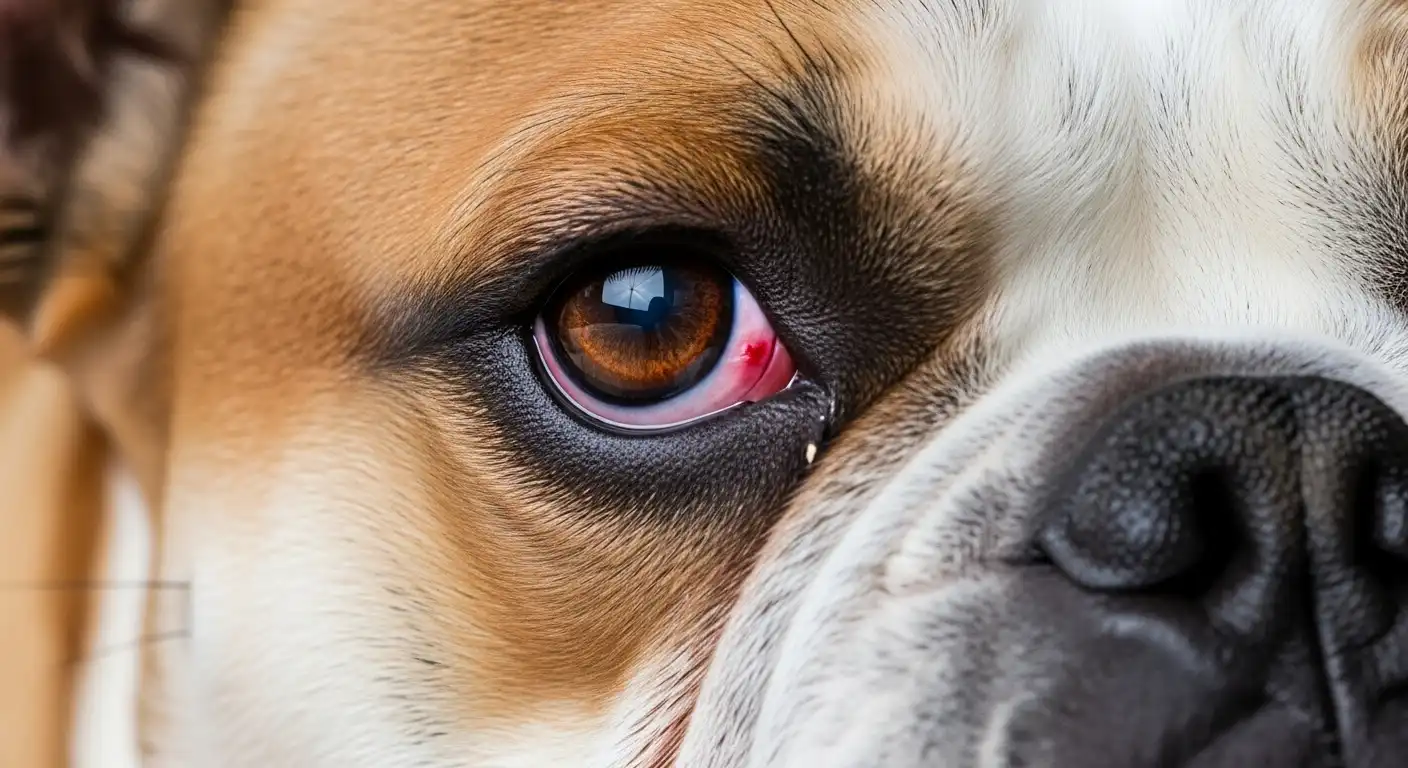Introduction
Cherry eye, although not life-threatening, is one of the most common eye conditions found in Bulldogs. This condition, which affects the tear gland of the third eyelid, is often characterized by a noticeable red or pink mass in the corner of the eye. While cherry eye may not be immediately painful, it can lead to discomfort, eye infections, and long-term health issues if left untreated. If you’re a Bulldog owner, understanding this condition is essential for providing your pet with the proper care and attention it needs. In this guide, we’ll explore the causes, symptoms, treatment options, and recovery processes associated with cherry eye in Bulldogs.
What is Cherry Eye?
Cherry eye, also known as third eyelid prolapse, occurs when the gland of the third eyelid, or nictitating membrane, prolapses or bulges out of place. The third eyelid is located in the inner corner of the eye, and it has a tear gland that contributes to the production of tears. This gland is held in place by a ligament, but sometimes this ligament can weaken, causing the gland to slip out of its normal position. This results in the characteristic “cherry-like” appearance.
In Bulldogs, cherry eye is most commonly seen in puppies between the ages of 6 months and 2 years, but adult Bulldogs can also develop this condition. Bulldogs are particularly prone to cherry eye due to their unique facial structure, which includes shallow eye sockets and loose connective tissues. This anatomical predisposition makes Bulldogs more vulnerable to the displacement of the third eyelid’s tear gland.
 Why Are Bulldogs Prone to Cherry Eye?
Why Are Bulldogs Prone to Cherry Eye?
Bulldogs, especially English Bulldogs, have several anatomical and genetic factors that make them more likely to develop cherry eye. Their distinctive facial features, such as their short, flat noses and deep-set eyes, contribute to the conditions that lead to the prolapse of the third eyelid gland. Additionally, Bulldogs have weaker connective tissue in the eye area, which may cause the ligament holding the tear gland in place to stretch or rupture, leading to cherry eye.
The condition is more common in Bulldogs, but it can affect other dog breeds as well. Other breeds known to be prone to cherry eye include Cocker Spaniels, Beagles, and Shih Tzus. However, the Bulldogs’ facial structure significantly increases the likelihood of this issue.
Symptoms of Cherry Eye in Bulldogs
The primary symptom of cherry eye is the visible, red or pink mass that appears in the inner corner of the eye, resembling a cherry. Other symptoms that may accompany cherry eye include:
Excessive tearing: Bulldogs with cherry eye may have watery eyes as the affected gland overproduces tears.
Swelling: The eye area may appear swollen and inflamed.
Discharge: There could be thick, mucous discharge from the eye, especially if the condition leads to an infection.
Rubbing or pawing at the eye: Your Bulldog might frequently rub or scratch at their eye due to irritation or discomfort.
Sensitivity to light: The prolapsed gland can cause the eye to become more sensitive to light, leading to squinting or avoiding bright environments.
If your Bulldog is showing any of these symptoms, it’s essential to consult a veterinarian for a proper diagnosis.
Treatment Options for Cherry Eye in Bulldogs
Surgical Treatment
While some mild cases of cherry eye can be managed temporarily with medications, surgery is usually the most effective and long-term solution. There are two main surgical techniques used to correct cherry eye in Bulldogs:
1. Tacking or Anchoring Procedure
This technique involves placing a suture in the affected eye to hold the prolapsed gland in place. The suture anchors the gland to the correct position, preventing it from slipping out of place again. While this method is less invasive and generally effective, there is a higher risk of the condition recurring over time, especially in Bulldogs that are genetically predisposed to cherry eye.
2. Pocket Technique (Imbrication)
The pocket technique is considered the more advanced and preferred method for treating cherry eye in Bulldogs. In this procedure, the veterinarian creates a small pocket in the third eyelid and places the tear gland back into the pocket. The gland is then stitched into place, which is more secure than the tacking procedure. This method has a lower recurrence rate, and it is often recommended by veterinary ophthalmologists as it is less likely to lead to complications later on.
Both procedures are typically performed under general anesthesia. Your veterinarian will choose the most appropriate technique based on the Bulldog’s health, the severity of the cherry eye, and other individual factors.
Non-Surgical Treatment
In certain cases, especially with younger puppies or mild instances of cherry eye, your veterinarian may attempt non-surgical treatments. These methods are typically temporary and do not address the underlying issue of the prolapsed gland, but they can provide relief in the short term:
1. Medications
Your veterinarian may prescribe antibiotic or anti-inflammatory eye drops to reduce swelling and prevent infection. These medications may help soothe the eye and improve the appearance temporarily, but they will not prevent the recurrence of cherry eye. Medications are generally used as a stopgap measure before surgery is recommended.
2. Massage
In very mild cases, your veterinarian may suggest gently massaging the prolapsed gland back into its normal position. This is only effective in the early stages of cherry eye and should only be attempted under veterinary supervision. If successful, the gland may remain in place for a time, but surgery is often still needed to prevent future problems.

Post-Surgery Care and Recovery
After surgery, Bulldogs typically require a recovery period. It’s essential to follow your veterinarian’s instructions to ensure the best outcome:
Medication: You will likely need to administer prescribed antibiotics and anti-inflammatory eye drops to prevent infection and reduce inflammation.
E-Collar (Elizabethan Collar): To prevent your Bulldog from rubbing their eye or scratching it during recovery, an e-collar will likely be recommended. The collar prevents the dog from reaching its eyes with its paws, which helps avoid irritation and further damage.
Limit Activity: It’s essential to limit your Bulldog’s physical activity during the recovery period. Avoid running, jumping, or any rough play for several weeks after surgery to ensure the gland heals properly.
Follow-Up Appointments: Your veterinarian will likely schedule a follow-up visit to ensure that the eye is healing correctly and that the gland remains in place.
The recovery time for Bulldogs varies, but most dogs heal within 2 to 4 weeks. During this time, you should monitor for any signs of complications, such as increased swelling or discharge from the eye. If any concerning symptoms arise, contact your veterinarian promptly.
Potential Complications if Left Untreated
If cherry eye is left untreated, Bulldogs can experience several complications:
Dry Eye (Keratoconjunctivitis Sicca): When the third eyelid gland prolapses, it can reduce tear production, leading to dry eye. This condition can cause discomfort, redness, and potentially permanent damage to the cornea.
Conjunctivitis (Pink Eye): If the tear gland remains prolapsed for an extended period, it can lead to inflammation of the conjunctiva, known as conjunctivitis. This can cause redness, swelling, and discharge.
Corneal Ulcers: Chronic irritation caused by an untreated cherry eye can lead to corneal ulcers, which are painful and may result in vision loss if left untreated.
Preventing Cherry Eye in Bulldogs
While genetics play a significant role in the development of cherry eye, there are a few measures you can take to help prevent the condition from developing or recurring:
Routine Veterinary Checkups: Regular eye exams can help detect early signs of cherry eye and other ocular conditions before they worsen.
Proper Grooming: Keep the folds and creases around your Bulldog’s eyes clean and dry to avoid irritation that may exacerbate cherry eye or lead to infections.
Avoiding Eye Trauma: Protect your Bulldog’s eyes from trauma, such as from rough play or foreign objects, which can trigger or worsen the condition.
Conclusion
Cherry eye is a common yet manageable condition in Bulldogs. Although the appearance of the red, swollen gland can be concerning, with proper veterinary care, Bulldogs can recover fully and lead happy, healthy lives. Early detection, appropriate treatment, and diligent post-care are crucial to maintaining your Bulldog’s eye health. If you notice signs of cherry eye in your Bulldog, consult a veterinarian as soon as possible for the best course of action.

 Why Are Bulldogs Prone to Cherry Eye?
Why Are Bulldogs Prone to Cherry Eye?